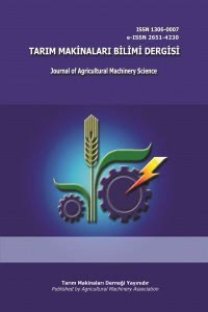Toprak İşlemede Yeni Yaklaşımlar: Albedo Etkisi
İklim değişikliğine bağlı olarak aşırı sıcaklıkların yaşandığı günlerin artışı, toplumlar için bir endişe kaynağıdır. Bu durum insanoğlu ve ekosistem için büyük bir tehlike oluşturmaktadır. Son yıllarda araştırmacılar, iklim değişikliğini kasıtlı olarak manipüle edip, bu etkileri hafifletmeyi amaçlayan tarımsal uygulamaları olan “İklim Mühendisliği Tekniklerini” sıklıkla kullanıyorlar. Bu tarımsal uygulamalardan birisi de toprak işleme uygulamalarıdır. Topraktaki karbon salınımını yavaşlatmak için toprak işlemeyi azaltmak ya da toprağı bastırmak, küresel ısınmanın yavaşlamasına yardımcı olabilir. Aslında bu uygulamaların toprak yüzeyinin fiziksel özelliklerini değiştirerek, bölgesel iklim üzerinde doğrudan bir etkiye de sahip oldukları konusunda pek çok araştırıcı hemfikirdir. Ancak, dünya da olduğu gibi Ülkemizde de bu biyo-jeofizik etkiler hala iyi bilinmemektedir. Ancak, toprak işleme şekline göre Albedo (yansıtabilirlik) etkisinin belirlenmesi ve iklim değişikliğinin azaltılmasında bu etkinin kullanılması iklim mühendislerinin ilgisini çeken konulara arasında yer almaktadır.
Anahtar Kelimeler:
Albedo, ışınım, mekanizasyon, toprak işleme, toprak yönetimi
___
- Anonim, 2018. Albedo Etkisi: Beton ve asfalt. http://www.betonvecimento.com/beton-2/albedo (Erişim: Mayıs 2018) Anonim, 2011. Climate solutions in agriculture. California Climate & Agriculture Network. www.calclimateag.org (Erişim: Haziran 2018) Cierniewski, J., J. Ceglarek, A. Karnieli, E. Ben-Dor, S. Królewicz, 2018. Shortwave radiation affected by agricultural practices and cezary Ka ́ zmierowski. Remote Sens., 2015 vol: 10, 419. doi:10.3390/rs10030419. www.mdpi.com/journal Cresswell, H.P., D.J. Painter, K.C. Cameron, 1993. Tillage and water content effects on surface soil hydraulic properties and shortwave albedo. Published in Soil Sci. Soc. Am. J. 57:816-824 Davin, E.L., N. Noblet-Ducoudré, P. Friedlingstein, 2007. Impact of land cover change on surface climate: Relevance of the radiative forcing concept. Geophys. Res. Lett. 2007, 34. Davin, E. L., S. I. Seneviratne, P. Ciais, A. Olioso, T. Wang, 2014. Preferential cooling of hot extremes from cropland albedo management. PNAS, vol.111, no : 27, 9757-9761. www.pnas.org/cgi/doi/10.1073/pnas.1317323111 Desjardins, R.L., 2009. The ımpact of agriculture on climate change. Adapting agriculture to climate change. Agriculture and Agri-Food Canada Ottawa, Ontario, pp: 29-39. http://hdl.handle.net/1813/51302 Dexter, R., 2004. Diurnal and seasonal albedo trends of wheat at the Bratt’s Lake observatory, Saskatchewan. M.S. thesis, Dept. of Geography, Simon Fraser University, 113 pp. Dobos, E., 2006. Albedo. In Encyclopedia of Soil Science; Taylor & Francis: London, UK, 2006. Horton R., K. Bristow, G. Kluitenberg, T. Sauer, 199. Crop residue effects on surface radiation and energy balance- Review. Theor Appl Climatol 54(1-2):27–37. Fritschen, L.J., 1967. Net and solar radiation relations over irrigated field crops. Agric. Meteorol. 4:55-62. Fontes, A.F., 1996. Soil albedo in relation to soil color, moısture and roughness. The University of arizona, department of soıi, water and environmental scıence, doctor of phılosophy. http://hdl.handle.net/10150/191203 Graham, W.G., and K.M. King. 1961. Short-wave reflection coefficient for a field of maize. Quart. J. R. Meteorol. Soc. 87(373):425-428. Kaye, J. P., M. Quemada, 2017. Using cover crops to mitigate and adapt to climate change: A review. Agron. Sustain. Dev. (2017) 37: 4. https://doi.org/10. 1007/s13593-016- 0410-x Kıncay, O., 2018. Güneş enerjisi ders notları, güneş enerjisi, II. bölüm. Erişim (Mayıs 2018) http://www.solar-academy.com/menuis/Gunes-Enerjisi. 021720.pdf. Kung, E.C., 1964. Study of a continental surface albedo on the basis of flight measurements and structure of the earth's surface over North America. Mon. Wea. Rev. 92(12):543-564. Lobell D., G. Bala, P. Duffy, 2006. Biogeophysical impacts of cropland management changes on climate. Geophys Res Lett 33(6), L06708, 10.1029/2005GL025492. Matthias, A.D.D., A. Fimbres, E.E.E. Sano, D.F.F. Post, L. Accioly, A.K.K. Batchily, L.G.G. Ferreira, 2000. Surface roughness effects on soil albedo. Soil Sci. Soc. Am. J. 2000, 64, 1035–1041 Mikhajlova, N.A., D.S. Orlov, 1986. Opticheskie Svoystva Pochvi Pochvennych Komponentov. Russ. Nauka. Moscow, Russia. Oke, T.R., 1992. Boundary Layer Climates. Routledge: London, UK, 1992. Pierre Y. B., and R.M. Bright, 2016. Albedo effects of bıomass productıon: a revıew. Report to the IEA- Bioenergy Task 43 & Task 38. Potter, K.N., R. Horton, and R.M. Cruse, 1987. Soil surface roughness effects on radiation reflectance and soil heat flux. Soil Sci. Soc. Am. J. 51:855-860. Rechid, D., D. Jacob, S. Hagemann, T.J. Raddatz, 2005. Vegetation effect on land surface albedo: Method to separate vegetation albedo from the underlying surface using satellite data. Geophys. Res. Abstr. 2005, 7, 7962. Reginato, R.J., J.F. Vedder, S.B. Idso, R.D. Jackson, M.B. Blanchard, and R. Goettelman, 1977. An evaluation of total solar reflectance and spectral band rationing techniques for estimating soil water content. J. Geophys. Res. 82:2101-2104. Schwaiger H.P., and D.N. Bird, 2010. Integration of albedo effects caused by land use change into the climate balance: Should we still account in greenhouse gas units? Forest Ecology and Managemetn 260: 278-286. doi:10.1016/j.foreco.2009.12.002 Sellers, P.J., B.W. Meeson, F.G. Hall, G. Asrar, R.E. Murphy, R.A. Schiffer, F.P. Bretherton, R.E. Dickinson, R.G. Ellingson, 2005. Field, C.B.; et al. Remote sensing of the land surface for studies of global change: Models— Algorithms—Experiments. Remote Sens. Environ. 1995, 51, 3–26. Seo, T., 1972. Albedo of several field crops. Berichte des Ohara Inst. Landwirt. Biol.Okayama Univ. 15(3):111-132. Yan, S., N., Mclaughlin, X., Zhang, M., Xu, A., Liang, 2018. Effect of tillage and crop residue on soil temperature following planting for a Black soil in Northeast China. Scientific Reports volume 8, Article number: 4500 (2018)
- ISSN: 1306-0007
- Başlangıç: 2005
- Yayıncı: Tarım Makinaları Derneği
Sayıdaki Diğer Makaleler
Ahmet ÇIKMAN, Tali MONİS, Abdullah Suat NACAR, Yasemin VURARAK
Toprak İşlemede Yeni Yaklaşımlar: Albedo Etkisi
Yasemin VURARAK, Ahmet ÇIKMAN, M. Emin BİLGİLİ, Zinnur GÖZÜBÜYÜK
İkbal AYGÜN, Engin ÇAKIR, Fatih ERKAN
Güneydoğu Anadolu Projesi (GAP) Bölgesinin Tarımsal Biyokütle Potansiyeli
Nusret MUTLU, Mustafa TOLAY, Cengiz KARACA, Hasan Hüseyin ÖZTÜRK
